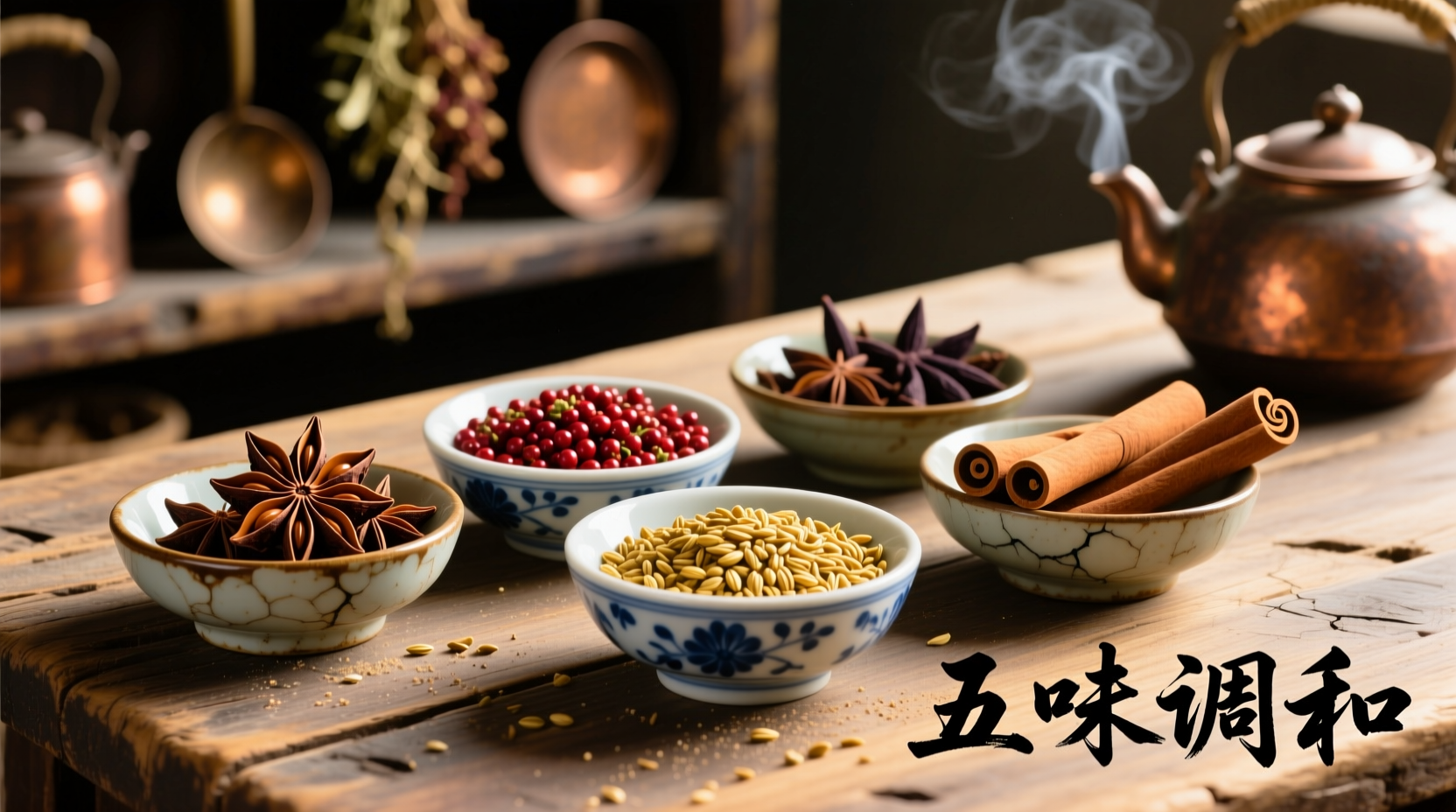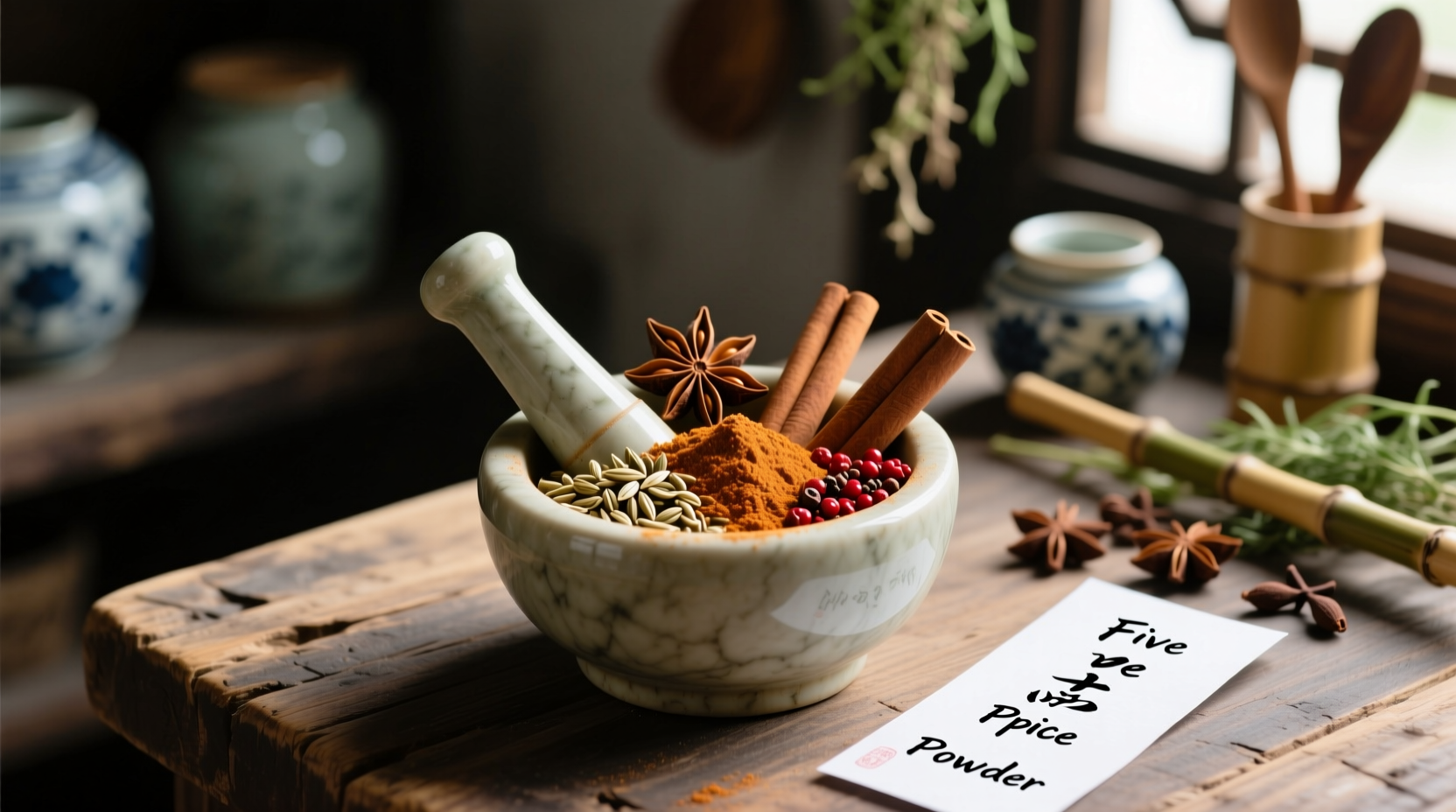For home cooks exploring authentic Chinese cuisine, understanding what Chinese 5 spice really is transforms ordinary dishes into extraordinary culinary experiences. This foundational blend isn't just random spices thrown together—it's a carefully balanced symphony of flavors rooted in ancient Chinese philosophy and cooking traditions. Whether you're preparing classic dishes like red-braised pork or creating modern fusion recipes, knowing how to properly use Chinese 5 spice elevates your cooking from good to authentically great.
The Five Essential Components Explained
Contrary to what the name suggests, Chinese 5 spice isn't about heat but rather a harmonious balance of five fundamental flavor elements. Each component serves a specific purpose in creating this complex profile:
| Spice | Primary Flavor Profile | Traditional Role | Percentage in Blend |
|---|---|---|---|
| Star Anise | Sweet licorice-like | Represents the sweet element | 30-35% |
| Cloves | Strong, warm, slightly bitter | Represents the bitter element | 15-20% |
| Chinese Cinnamon (Cassia) | Warm, sweet, woody | Represents the pungent element | 25-30% |
| Sichuan Peppercorns | Citrusy, floral, numbing sensation | Represents the sour element | 15-20% |
| Fennel Seeds | Mildly sweet, anise-like | Represents the salty element | 10-15% |
This precise ratio creates the signature flavor profile that has been documented in Chinese culinary texts since the Ming Dynasty. Unlike Western spice blends that often emphasize heat, Chinese 5 spice focuses on achieving balance according to the five elements philosophy (wood, fire, earth, metal, water) and five basic tastes.
Historical Evolution and Cultural Significance
Chinese 5 spice originated during the Han Dynasty (206 BCE–220 CE) when spice trade routes connected China with Southeast Asia and India. The blend evolved significantly during the Ming Dynasty (1368–1644) when culinary texts first documented specific ratios. According to research from the China Academy of Culinary Arts, the modern formulation stabilized during the Qing Dynasty (1644–1912) as regional variations emerged across China's culinary landscape.
The blend's composition reflects traditional Chinese medicine principles where each spice corresponds to specific health benefits. Star anise aids digestion, cloves support oral health, cinnamon improves circulation, Sichuan peppercorns stimulate appetite, and fennel seeds relieve gas. This medicinal connection explains why Chinese 5 spice remains integral to both culinary and wellness traditions in Chinese culture.

Practical Cooking Applications
Knowing what Chinese 5 spice is only matters if you understand how to use it properly. Professional chefs recommend these evidence-based techniques for optimal flavor extraction:
- Dry toasting: Lightly toast whole spices in a dry pan before grinding to release essential oils
- Marinating time: Allow proteins to marinate with 5 spice for at least 2 hours (overnight for best results)
- Temperature control: Add early in cooking for braises but near the end for stir-fries to preserve volatile compounds
- Ratio guidance: Use 1 teaspoon per pound of meat or 1/4 teaspoon per cup of liquid in braising sauces
Regional variations significantly impact usage. Northern Chinese cuisine typically uses more fennel and less Sichuan peppercorn, creating a sweeter profile ideal for Beijing-style roast duck. Southern variations increase the Sichuan peppercorns for that distinctive mouth-numbing sensation perfect with Cantonese roast pork. Understanding these regional differences prevents common mistakes like using too much blend, which overwhelms rather than enhances.
Quality Assessment and Proper Storage
Freshness dramatically impacts what Chinese 5 spice can deliver in your cooking. High-quality blends should exhibit these characteristics:
- Bright, vibrant colors in each component (dull spices indicate age)
- Strong, complex aroma when rubbed between fingers
- Whole spices rather than pre-ground (grind only what you'll use within 2 weeks)
- No visible moisture or clumping
Store your Chinese 5 spice properly in an airtight container away from light and heat. Whole spices maintain potency for 12-18 months, while pre-ground blends lose flavor within 6 months. For optimal freshness, purchase small quantities from reputable spice merchants who can verify the blend's origin and processing methods.
Authentic Recipe Application
Understanding what Chinese 5 spice is becomes practical when applied to classic dishes. Try this simple red-braised pork recipe to experience the blend's transformative power:
- Dry toast 2 tablespoons Chinese 5 spice blend in a skillet over medium heat for 2 minutes
- Grind toasted spices and combine with 1/4 cup soy sauce, 2 tablespoons rice wine, and 2 tablespoons brown sugar
- Marinate 2 pounds pork belly for 4 hours
- Braise with ginger and scallions for 2 hours until tender
- Reduce sauce until glossy and coat the pork
The Chinese 5 spice penetrates the meat during braising, creating layers of flavor that develop complexity with each bite. This technique demonstrates why understanding what Chinese 5 spice really is matters more than simply adding it as an afterthought.











 浙公网安备
33010002000092号
浙公网安备
33010002000092号 浙B2-20120091-4
浙B2-20120091-4